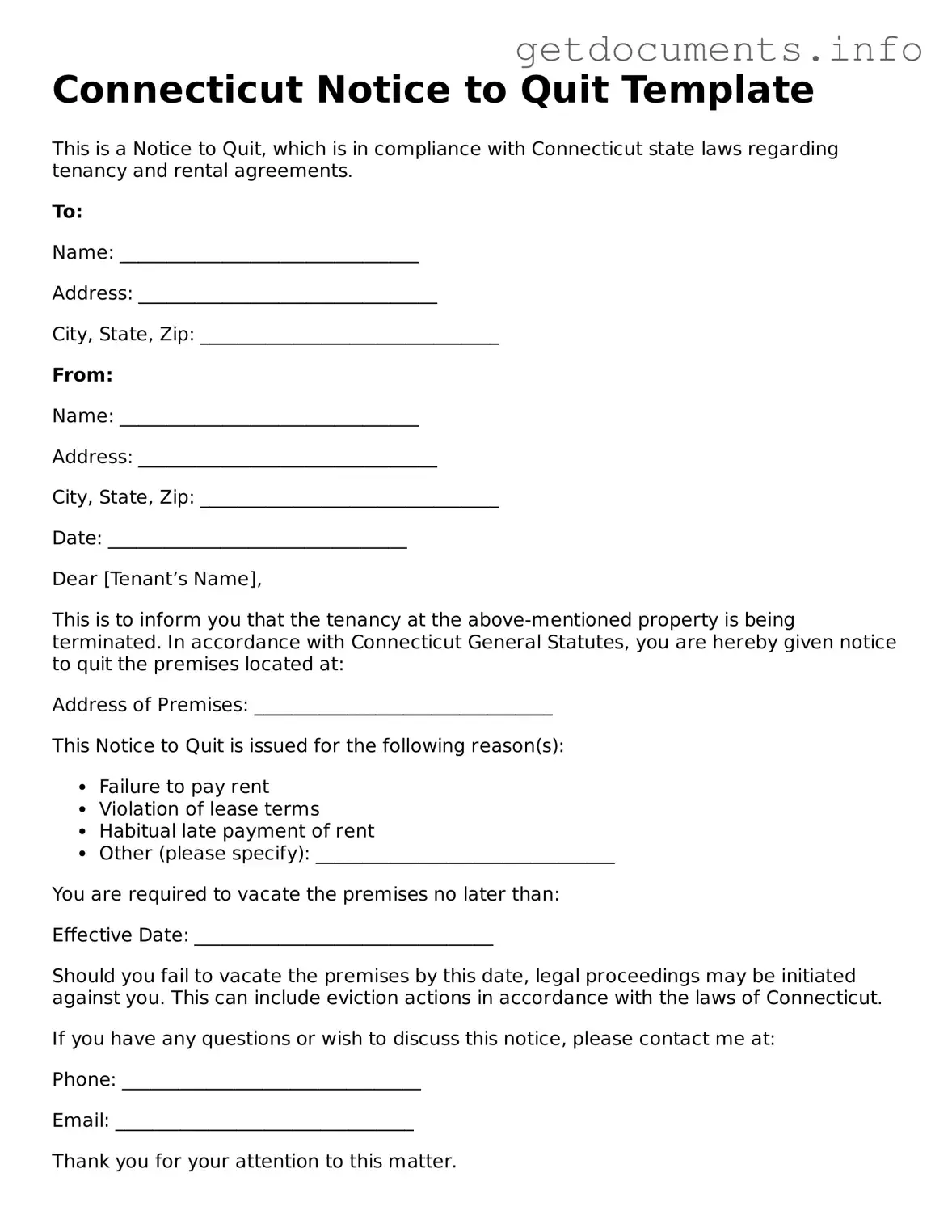The Connecticut Notice to Quit form serves as a crucial legal document in the landlord-tenant relationship, particularly when disputes arise regarding rental payments or lease agreements. This form is typically utilized by landlords to formally notify tenants of their intention to terminate the rental agreement, often due to non-payment of rent or other lease violations. It outlines the specific reasons for the notice and provides a clear timeline within which tenants must vacate the premises. Understanding the nuances of this form is essential for both landlords and tenants alike, as it not only sets the stage for potential eviction proceedings but also highlights the rights and responsibilities of each party involved. The Notice to Quit must be filled out accurately, adhering to state regulations, to ensure its enforceability in court. Additionally, it is important to consider the proper delivery methods, as the way the notice is served can significantly impact its validity. This article will delve into the essential components of the Connecticut Notice to Quit form, offering insights into its purpose, the necessary information it must contain, and the steps to take following its issuance.
